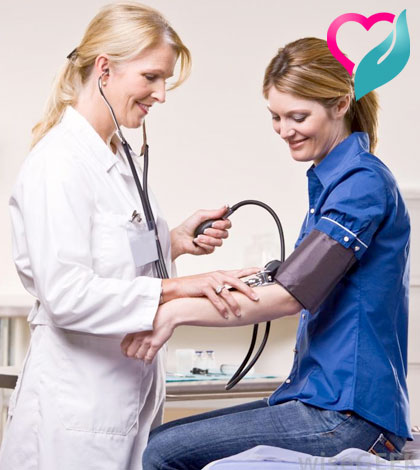5. Fish oil
Preliminary studies suggest that fish oil may have a modest effect on high blood pressure. Although fish oil supplements often contain both DHA (docohexaenoic acid) and EPA (eicosapentaenoic acid), there iDiet
[wp_ad_camp_1]
Changing your diet is an important part of lowering high blood pressure. The DASH (Dietary Approaches to Stop Hypertension) diet is promoted by the National Heart, Lung, and Blood Institute of the National Insitutes of Health (NIH).
The DASH diet includes fruits and vegetables, low-fat dairy foods, beans and nuts. Sodium is limited to 2,400 mg per day.
Studies have found that the DASH diet can reduce high blood pressure within two weeks. These are the daily guidelines of the DASH diet:
- 7 to 8 servings of grains
- 4 to 5 servings of vegetables
- 4 to 5 servings of fruit
- 2 to 3 servings of low-fat or non-fat dairy
- 2 or less servings of meat, fish, or poultry
- 2 to 3 servings of fats and oils
- 4 to 5 servings per week of nuts, seeds, and dry beans
Some evidence that DHA is the ingredient that lowers high blood pressure.
- Less than 5 servings a week of sweets
[wp_ad_camp_4]
Serving Sizes
- 1/2 cup cooked rice or pasta
- 1 slice bread
- 1 cup raw vegetables or fruit
- 1/2 cup cooked vegetables or fruit
- 8 oz. of milk
- 1 teaspoon olive oil
- 3 ounces cooked meat
- 3 ounces tofu
A related diet called the DASH-Sodium reduces sodium to 1,500 mg a day, which is approximately equal to 2/3 teaspoon from all sources (processed and canned foods contain hidden salt).
6. Skim Milk
It truly does a body good! Drinking heart-healthy skim milk or 1 percent milk will provide you with calcium and vitamin D — the two nutrients work as a team to help reduce blood pressure by 3 to 10 percent. Although this doesn’t sound like much, it could add up to about a 15 percent reduction in risk for cardiovascular disease.
7. Spinach
It contains magnesium, folate, iron, vitamin C and is very healthy for your body. Even if you don’t like it, make sure that you include this nutrient rich vegetable in your diet as it contains those key ingredients.
8. Beans
Kidney, pinto, lima and black beans are some types of beans you should include in your daily diet. Beans are rich, both in magnesium and potassium, capable of decreasing the high blood pressure.
Broccoli
Oozing with potassium, it also contains chromium which fights against the cardiovascular diseases. It controls the blood sugar and insulin levels.
[wp_ad_camp_2]
9. Celery
It contains an ingredient called phthalide which rests the muscles of the vessels and aids in the smooth flow of blood. Besides that, celery has a very calming effect and is highly recommended if you are prone to stress.
10. Tomatoes
It contains an antioxidant lycopene, which is known to significantly reduce the high blood pressure. Also, tomatoes are rich in calcium, potassium, vitamins A, C and E, all the essential nutrients required to curb the problem.
11.Whole grain foods (like oatmeal)
Whole grain foods are excellent sources of fibre, magnesium and other essential nutrients needed to maintain a healthy and balanced diet. Eating foods rich in fibre also keeps you feeling full for a longer period of time
Wiseman suggests whole grains that are high in potassium such as buckwheat and millet.
12.Ground flaxseeds
“Try adding ground flaxseeds to almost anything you eat,” says Wiseman. “They are high in fibre and can help those who are trying to maintain a strict and healthy diet.”
Flaxseeds also help lower cholesterol and are rich in omega-3 fatty acids, which fight inflammation and infection
13. Apricots
Apricots are a power food when it comes to fighting hypertension – especially when they’re dried. They contain a soluble fibre that helps promote digestion and fights bloating and constipation
14. Pumpkin Seeds
Pumpkin seeds can help reverse hypertension because they contain a high zinc value. Inadequate zinc can make your arteries lose elasticity, resulting in inflammation.
Pumpkin seeds are a healthy option for a light snack that’s not only tasty, but also good for you.
15. Cashew nuts
Nuts are a great source of nutrients like iron, potassium and fibre. Cashew nuts, specifically, contain magnesium and copper — two essential nutrients that help boost your immunity. Magnesium relaxes your nerves and muscles, while copper helps with the development of connective tissue.
Cashew nuts are also low in fat and are cholesterol-free, so they make for a delicious, yet healthy snack. But be sure to eat them in moderation (about 1/4 cup a day), and avoid the salted options.
16.Oily fish (such as salmon and sardines)
If you have hypertension, you should consider eating at least three oily fish meals a week. Fish contain high amounts of omega-3 fatty acids, which help promote normal body functions.
Studies also show that fish oils can help regulate your mood and emotions, which can drastically change due to high blood pressure. Replacing red meat with lower-fat options like salmon and sardines can also help you to maintain a healthy weight.
17. Indulge in dark chocolate
Dark chocolate varieties contain flavanols that make blood vessels more elastic. In one study, 18% of patients who ate it every day saw blood pressure decrease. Have 1/2 ounce daily (make sure it contains at least 70% cocoa).
[wp_ad_camp_3]
Image courtesy: wisegeek.com , tipsmaza.com , freewallpapershd.net , ballywhointeractive.com



























